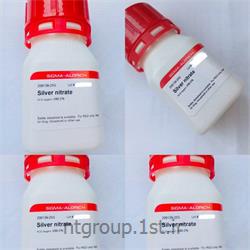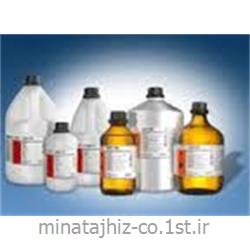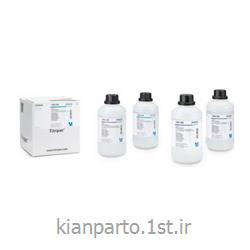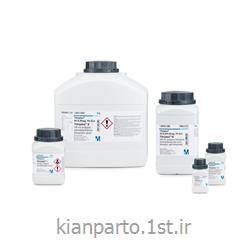| Product Information | |
|---|---|
| Grade | ACS,ISO,Reag. Ph Eur |
| HS Code | 2806 10 00 |
| Physicochemical Information | |
|---|---|
| Density | 1.19 g/cm3 (20 °C) |
| pH value | <1 (H₂O, 20 °C) |
| Vapor pressure | 190 hPa (20 °C) |
| Safety Information according to GHS | |
|---|---|
| Hazard Pictogram(s) |   |
| Hazard Statement(s) | H290: May be corrosive to metals. H314: Causes severe skin burns and eye damage. H335: May cause respiratory irritation. |
| Precautionary Statement(s) | P280: Wear protective gloves/ protective clothing/ eye protection/ face protection. P301 + P330 + P331: IF SWALLOWED: Rinse mouth. Do NOT induce vomiting. P305 + P351 + P338: IF IN EYES: Rinse cautiously with water for several minutes. Remove contact lenses, if present and easy to do. Continue rinsing. P308 + P310: IF exposed or concerned: immediately call a POISON CENTER or doctor/ physician. |
| Storage class | 8B Non-combustible, corrosive hazardous materials |
| WGK | WGK 1 slightly water endangering |
| Disposal | 12 Inorganic acids and anhydrides thereof should first be diluted or hydrolyzed by stirring carefully into ice water and then neutralized (protective gloves, fume cupboard!) with sodium hydroxide solution (Cat. No. 105587). Before filling into container D, check the pH with pH universal indicator strips (Cat. No. 109535). Fuming sulfuric acid should be carefully stirred dropwise into 40 % sulfuric acid (Cat. No. 109286). Ensure that plenty of ice is available for cooling! When sufficiently cool, treat the highly concentrated sulfuric acid as described above. Analogous to this procedure, other anhydrides can be converted into their corresponding acids. Acid gases (e.g. hydrogen halide, chlorine, phosgene, sulfur dioxide) can be introduced into dilute sodium hydroxide solution and after neutralization disposed of in container D. |
| Safety Information | |
|---|---|
| Hazard Symbols |  Corrosive Corrosive |
| Categories of danger | corrosive |
| R Phrase | R 34-37 Causes burns.Irritating to respiratory system. |
| S Phrase | S 26-36/37/39-45 In case of contact with eyes, rinse immediately with plenty of water and seek medical advice.Wear suitable protective clothing, gloves and eye/face protection.In case of accident or if you feel unwell, seek medical advice immediately (show the label where possible). |
| Storage and Shipping Information | |
|---|---|
| Storage | Store at +2°C to +25°C. |
| Transport Information | |
|---|---|
| Declaration (railroad and road) ADR, RID | UN 1789 , 8, II |
| Declaration (transport by air) IATA-DGR | UN 1789 , 8, II |
| Declaration (transport by sea) IMDG-Code | UN 1789 , 8, II, Segregation Group: 1 (Acids) |
| Specifications | |
|---|---|
| Assay (alkalimetric) | 37.0 - 38.0 % |
| Identity | passes test |
| Colour | ≤ 10 Hazen |
| Appearance | passes test |
| Appearance of solution | passes test |
| Bromide (Br) | ≤ 50 ppm |
| Free chlorine (Cl) | ≤ 0.4 ppm |
| Phosphate (PO₄) | ≤ 0.5 ppm |
| Sulphate (SO₄) | ≤ 0.5 ppm |
| Sulfite (SO₃) | ≤ 0.5 ppm |
| Heavy metals (as Pb) | ≤ 1 ppm |
| Ag (Silver) | ≤ 0.020 ppm |
| Al (Aluminium) | ≤ 0.050 ppm |
| As (Arsenic) | ≤ 0.010 ppm |
| Au (Gold) | ≤ 0.050 ppm |
| B (Boron) | ≤ 0.100 ppm |
| Ba (Barium) | ≤ 0.010 ppm |
| Be (Beryllium) | ≤ 0.010 ppm |
| Bi (Bismuth) | ≤ 0.050 ppm |
| Ca (Calcium) | ≤ 0.300 ppm |
| Cd (Cadmium) | ≤ 0.010 ppm |
| Co (Cobalt) | ≤ 0.010 ppm |
| Cr (Chromium) | ≤ 0.010 ppm |
| Cu (Copper) | ≤ 0.010 ppm |
| Fe (Iron) | ≤ 0.100 ppm |
| Ga (Gallium) | ≤ 0.050 ppm |
| Ge (Germanium) | ≤ 0.020 ppm |
| Hg (Mercury) | ≤ 0.010 ppm |
| K (Potassium) | ≤ 0.100 ppm |
| Li (Lithium) | ≤ 0.010 ppm |
| Mg (Magnesium) | ≤ 0.050 ppm |
| Mn (Manganese) | ≤ 0.010 ppm |
| Mo (Molybdenum) | ≤ 0.010 ppm |
| NH₄ (Ammonium) | ≤ 1 ppm |
| Na (Sodium) | ≤ 0.300 ppm |
| Ni (Nickel) | ≤ 0.020 ppm |
| Pb (Lead) | ≤ 0.010 ppm |
| Pt (Platinum) | ≤ 0.100 ppm |
| Sn (Tin) | ≤ 0.050 ppm |
| Sr (Strontium) | ≤ 0.010 ppm |
| Ti (Titanium) | ≤ 0.020 ppm |
| Tl (Thallium) | ≤ 0.020 ppm |
| V (Vanadium) | ≤ 0.010 ppm |
| Zn (Zinc) | ≤ 0.050 ppm |
| Zr (Zirconium) | ≤ 0.020 ppm |
| Residue on ignition (as SO₄) | ≤ 3 ppm |
| Non volatile matter | ≤ 10 ppm |
| Expiry date : see product label | |




 سفارش آنلاین
سفارش آنلاین

 ضمانت سلامت فیزیکی
ضمانت سلامت فیزیکی ضمانت اصالت کالا
ضمانت اصالت کالا



















































